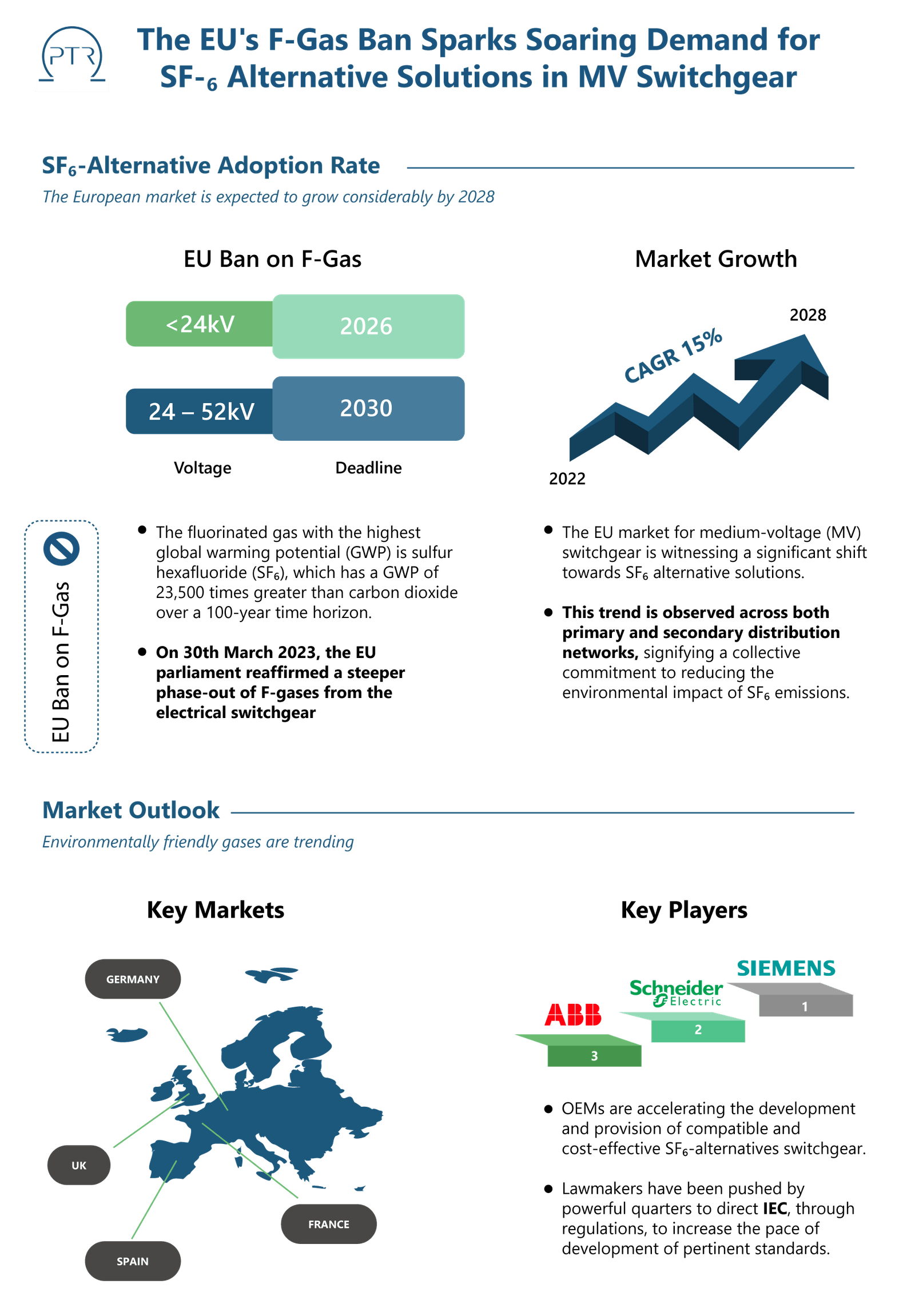- The SF6-alternative switchgear market in Europe is poised for significant growth due to the recent ban imposed by the EU parliament on the sale of SF6 switchgear.
- SF6 gas, despite its widespread usage, has been found to possess a remarkably high greenhouse warming potential. As a result, there is a pressing need to replace SF6 with more environmentally friendly alternatives, such as natural air or solid insulation.
- This transition towards greener options is expected to drive the expansion of the SF6-alternative switchgear market in the region.
- The infographic highlights the impact of the EU F-Gas ban on the demand for alternative solutions to SF6 in medium voltage (MV) switchgear within the European Union. It presents a visual representation of the growing need for SF6 alternative solutions as a result of the ban.
- The graphic showcases the rising trend in demand for environmentally friendly alternatives and emphasizes the urgency for manufacturers to develop and offer compatible and cost-effective alternatives to SF6 in MV switchgear.
- The infographic aims to raise awareness about the transition towards sustainable solutions in line with the EU’s F-Gas regulations.

Medium Voltage Switchgear Service Overview
The research presented in this article is from PTR's Medium Voltage Switchgear service. For information about this service please submit a request shown below.
Contact Sales:
Europe
+49-89-12250950
Americas
+1 408-604-0522
Japan
+81-80-7808-1378
GCC/Rest of APAC
+971-58-1602441
More about our:
Medium Voltage Market Research
Recent Insights
COP27: The Fight to Keep the 1.5°C Goal Alive
The Sharm El-Sheikh Climate Change Conference took place last month in Egypt, commencing on 6 November 2022 and ending on the 18th. The conference...
Summary of Developments at COP27
The Sharm El-Sheikh Climate Conference officially ended with an historic climate “loss and damage” fund being set up on Sunday, 20 November. Here...
Transition to SF6 Free HV Equipment Picking Pace
• Global warming potential of SF6 is 23,500 times higher than that of CO2 over a span of 100 years and has an atmospheric life of 3,200 years.• It...



